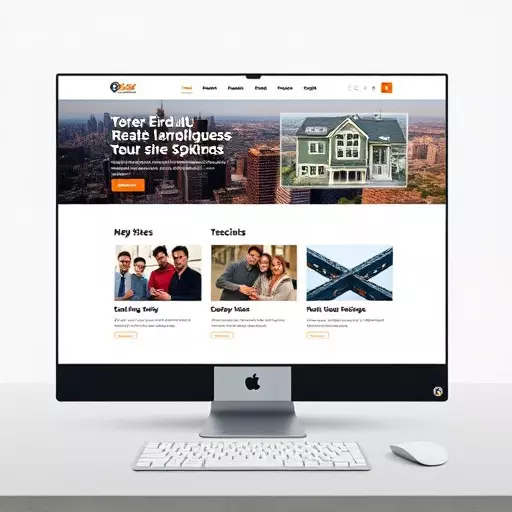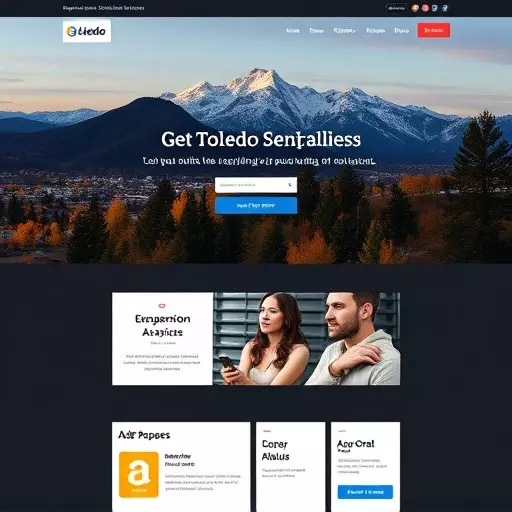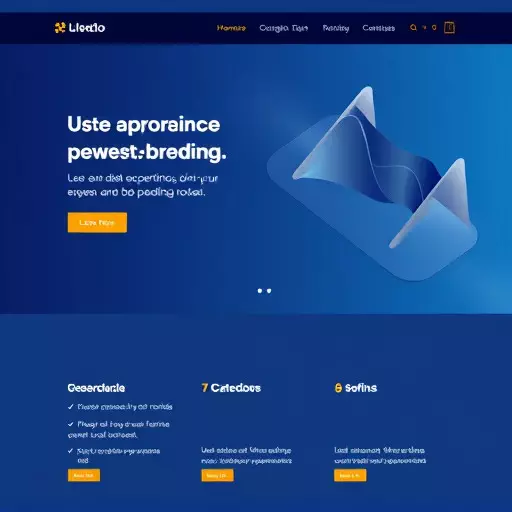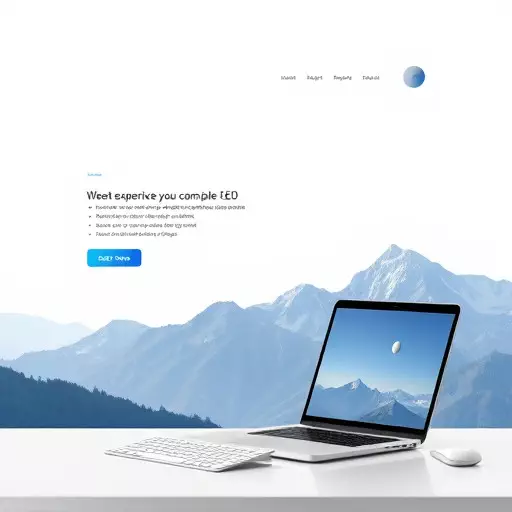Website rebranding services Toledo succeed by clearly defining project goals and scope, focusing on enhancing brand awareness and engaging younger demographics. This involves a comprehensive UX overhaul with key strategies like UI redesign, information architecture optimization, and establishing key performance indicators (KPIs). A strong visual design language is established through user research to ensure the new design resonates with the target market, maintaining accessibility and visual consistency. A strategic marketing plan includes pre-launch buzz generation and post-launch evaluation using analytics, ensuring continuous improvement and maximizing the impact of user experience (UX) overhaul and user interface (UI) redesign.
A website redesign project is a multifaceted endeavor that requires strategic planning and meticulous execution. From defining clear project goals aligned with business objectives to conducting user research for an optimal UX overhaul, each stage is pivotal. This article guides you through the process, from creating a compelling visual design language and streamlining content architecture to implementing, testing, and launching your revamped site. Key keywords: Website rebranding services Toledo, User experience (UX) overhaul, User interface (UI) redesign.
- Define Project Goals and Scope: Aligning Website Rebranding with Business Objectives
- Conduct User Research: Understanding Target Audience Needs and Behaviors
- Create a Visual Design Language: UI/UX Principles for Effective Website Redesign
- Develop Information Architecture: Streamlining Content for Enhanced Usability
- Implement and Test: Technical Aspects of Website Redesign and Quality Assurance
- Launch Strategy: Marketing and Communication Plan for Successful Rollout
- Post-Launch Evaluation: Measuring Success, Gathering Feedback, and Iterative Improvements
Define Project Goals and Scope: Aligning Website Rebranding with Business Objectives

Defining project goals and scope is a crucial step in any website redesign initiative, especially when offering Toledo-based website rebranding services. It involves understanding the client’s business objectives and translating them into tangible digital goals. For instance, if a company aims to enhance brand awareness and engage younger demographics, the project should focus on creating an appealing, modern interface (a UI redesign) with improved navigation and content presentation. This ensures that the new website design aligns with marketing strategies, making it an effective tool for user acquisition and retention.
During this phase, project managers also define key performance indicators (KPIs) to measure success. These KPIs could include increased user engagement, reduced bounce rates, or higher conversion rates post-redesign. An UX overhaul should be planned with these metrics in mind, ensuring that every change made contributes to a better user experience and aligns with the broader business strategy.
Conduct User Research: Understanding Target Audience Needs and Behaviors

When embarking on a website redesign project, especially through Toledo’s premier website rebranding services, a thorough understanding of your target audience is paramount. User Experience (UX) overhaul involves delving into who your users are, what they need, and how they interact with your digital platform. Through various research methods, including surveys, interviews, and analytics, you can gain valuable insights into user behaviors, preferences, and pain points. This data-driven approach ensures that the new Website Interface (UI) redesign aligns perfectly with user expectations, enhancing usability and driving better engagement.
By conducting extensive user research, you can identify opportunities to streamline navigation, simplify forms, or even introduce new features that were previously overlooked. These insights are crucial in creating a seamless and intuitive experience, which is essential for retaining users and encouraging repeat visits. Moreover, understanding your audience helps in making informed design decisions, ensuring the final product resonates with your target market, thereby maximizing the impact of the website rebranding services.
Create a Visual Design Language: UI/UX Principles for Effective Website Redesign

In any effective website redesign project, establishing a robust Visual Design Language is paramount. This involves defining a consistent set of UI/UX principles that guide the entire redesign process. Start by evaluating the current site’s user interface and experience, identifying areas for improvement based on user feedback and analytics. Incorporate modern design trends while ensuring accessibility and usability across various devices and browsers. A well-defined design language not only provides a cohesive look and feel but also streamlines development, making it easier to maintain and scale in the future.
When undertaking a website rebranding service in Toledo or any other location, understanding your target audience is crucial. Conduct thorough user research to gather insights into their preferences, behaviors, and pain points. Translate these findings into intuitive wireframes and prototypes that prioritize usability and visual hierarchy. Consistent use of typography, color schemes, icons, and layout patterns will enhance the overall User Interface (UI) redesign, making it more engaging and user-friendly. This UX overhaul ensures not only an aesthetically pleasing website but also one that delivers a seamless experience for your users.
Develop Information Architecture: Streamlining Content for Enhanced Usability

A successful website redesign goes beyond mere aesthetics; it’s about user experience (UX) overhaul that drives engagement and conversions. The first step in this process is developing a robust Information Architecture (IA). IA involves organizing and structuring content in a logical, intuitive manner, ensuring users can effortlessly navigate the site. During a website rebranding services Toledo project, it’s crucial to analyze existing content, identify core messages, and create a sitemap that mirrors user journeys. This means simplifying complex information, grouping related topics, and establishing clear hierarchy.
A well-designed IA not only improves user interface (UI) redesign efforts but also search engine optimization (SEO). It enables users to find relevant pages quickly, reducing bounce rates and increasing time spent on site. A streamlined IA also makes it easier for developers to implement the new design while maintaining content integrity and functionality.
Implement and Test: Technical Aspects of Website Redesign and Quality Assurance

Launch Strategy: Marketing and Communication Plan for Successful Rollout

A successful website launch hinges on a robust marketing and communication strategy, especially when executing a comprehensive Website rebranding services toledo that involves a User experience (UX) overhaul and User interface (UI) redesign. Prior to rollout, crafting a detailed plan ensures all stakeholders—from development teams to marketing departments and even clients—are aligned. This includes defining key messaging, identifying target audiences, and selecting the most effective communication channels.
The strategy should also account for pre-launch buzz generation, such as teaser campaigns and content teasers, followed by a well-timed official launch event or announcement. Post-launch, continuous evaluation through analytics and user feedback is crucial to measure success and identify areas for improvement, ensuring a seamless transition from old to new and maximizing the impact of the UI/UX redesign.
Post-Launch Evaluation: Measuring Success, Gathering Feedback, and Iterative Improvements

After a successful website launch, evaluating the project’s outcome is crucial for any website rebranding services like those offered in Toledo. This post-launch phase involves measuring the success of the redesign against set goals and KPIs (Key Performance Indicators). By analyzing user behavior through analytics tools, you can gauge improvements or areas that need refinement. The data collected during this period offers valuable insights into the effectiveness of the user experience (UX) overhaul and user interface (UI) redesign.
Gathering feedback from target users is another essential aspect. Conducting surveys, A/B testing, or user interviews allows direct communication with your audience to understand their experiences. This qualitative data complements quantitative metrics, providing a holistic view of the website’s performance and user satisfaction. Based on these insights, iterative improvements can be made to further enhance the site’s functionality, aesthetics, and overall user journey, ensuring a continuous improvement process for your Toledo-based website rebranding services.


